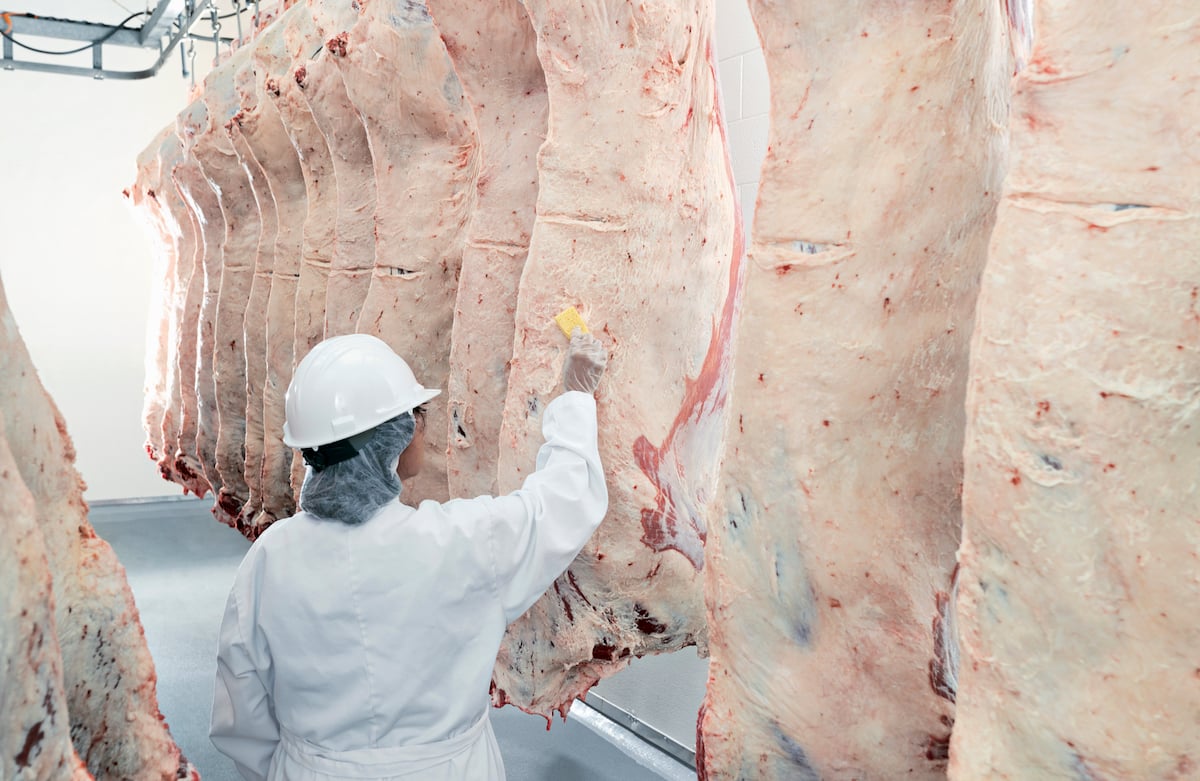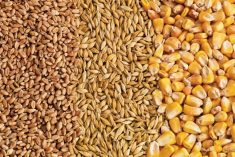ARLINGTON, Va., (Reuters) – U.S. farmers will plant
the same amount of soybeans and corn this spring, the U.S.
Department of Agriculture projected on Thursday, potentially
marking the first time since 1983 that corn has not been the
nation’s top crop.
Soybeans have gained favor among U.S. farmers as rising
global demand, especially from China, the world’s biggest soy
consumer, has made the oilseed more profitable to grow. The
United States is the world’s biggest corn producer and exporter,
Read Also

U.S. livestock: Cattle, hogs end week on high note
Cattle contracts and nearby hog futures ended the week on a high note after a week rife with losses. Most-traded…
The USDA at its annual outlook conference projected U.S.
soybean plantings for 2018 at 90.0 million acres (36.4 million
hectares), down from 90.1 million last year. The government put
2018 corn plantings at 90.0 million acres as well, down from
90.2 million in 2017.
Corn has been the most widely planted U.S. crop since 1983.
That year, soybean acres surpassed corn due to government
intervention through a program designed to shrink high corn
inventories at the time by paying farmers to leave fields idle
that would otherwise have been planted with corn.
The USDA forecast U.S. wheat plantings for 2018 at 46.5
million acres, up from 46.0 million a year earlier.
A Reuters poll of analysts showed the market consensus for
made from planting soy. Analysts estimated that soybean
plantings would rise to 90.6 million acres and corn seedings
would drop to 89.9 million acres.
The price ratio between new-crop November soybean futures
and December corn futures on the Chicago Board of
Trade is near 2.6-to-1, high enough to encourage farmers to
plant more soybeans than corn.
Soybeans are generally less expensive to plant than corn,
which requires more fertilizer, although corn yields more
bushels per acre.
If the soybean to corn ratio holds, the 2018 soybean area
could be 0.5-1.0 million acres above the USDA’s 90.0 million,
said Terry Reilly, senior analyst with Futures International.
The USDA is scheduled to release an annual planting
U.S. farmers have seen incomes fall due to several years of
global oversupply in grains markets. Banks that finance
agriculture prefer farmers to plant soybeans due to the lower
cost, and the potential for higher returns.
“The farm economy is still struggling, and soybeans are a
‘low-cost’ crop to plant, cutting producer risk, and more
importantly, the banker risk,” said Dale Durchholz, senior
market analyst with AgriVisor.
The USDA projected the average 2018 price for corn at $3.40
per bushel, up from $3.30 in 2017; the average soybean price at
$9.25 a bushel, down from $9.30 last year, and the average wheat
price at $4.70 a bushel, up from $4.60.
In Illinois, the top U.S. soy producer and No. 2 corn
grower, soybeans have been more profitable than corn every year
since 2012, according to University of Illinois agricultural
economist Gary Schnitkey.
(Reporting by Julie Ingwersen; editing by Simon Webb and
Marguerita Choy)














